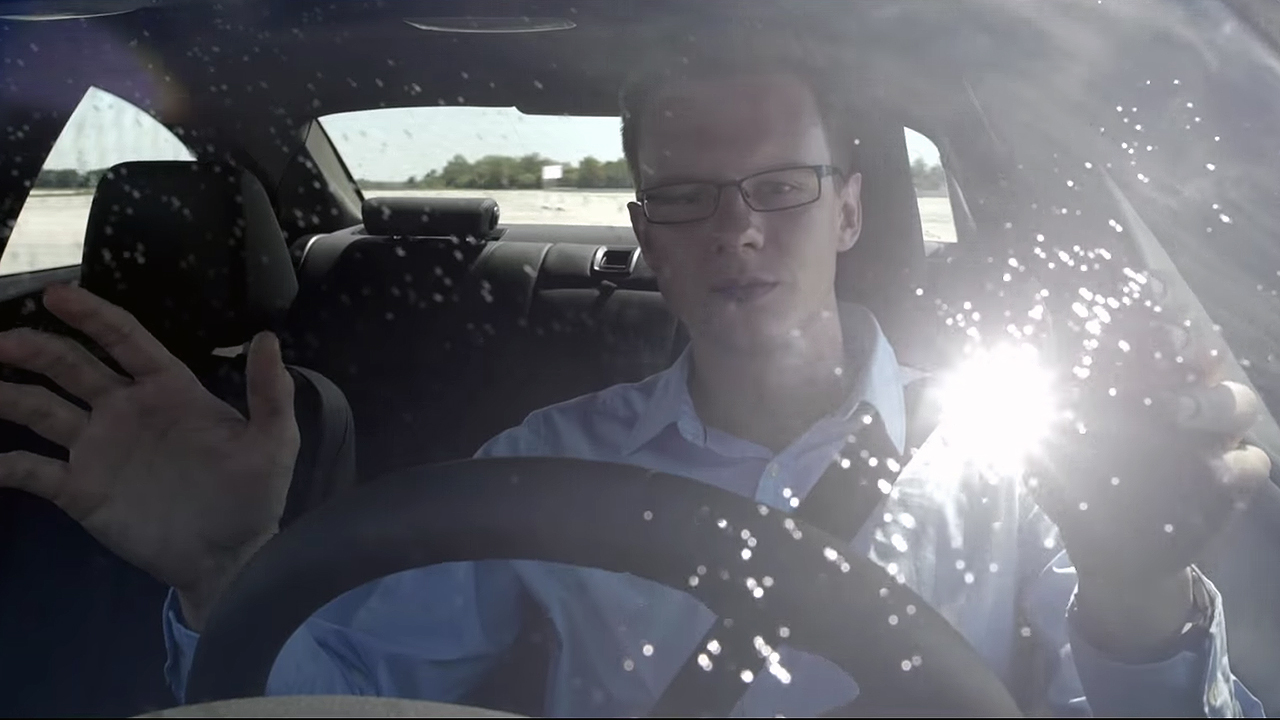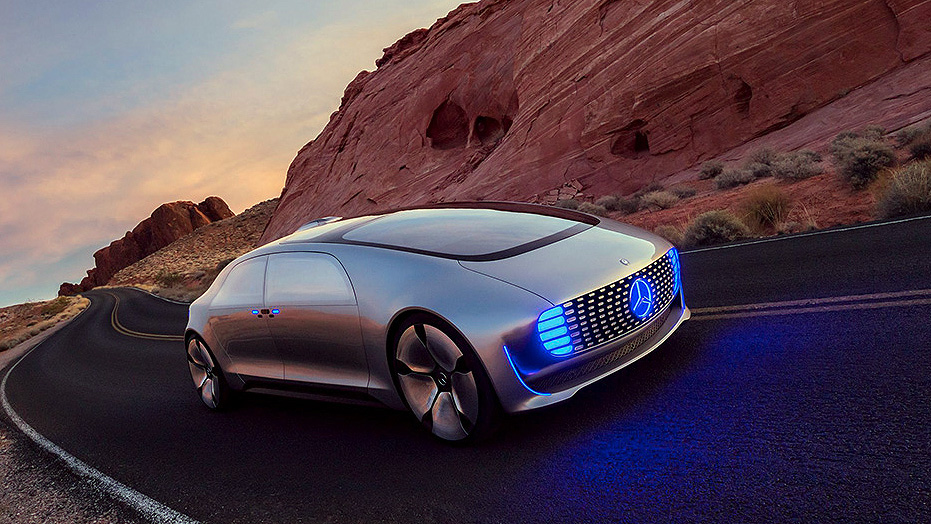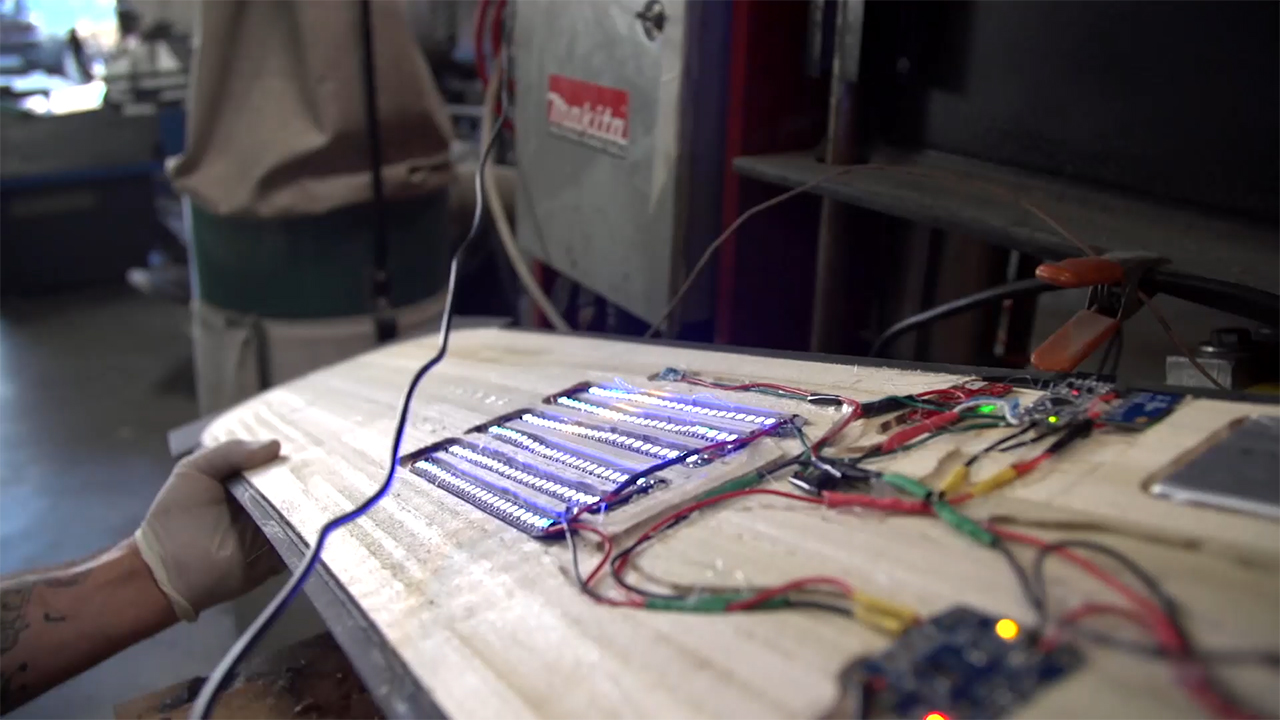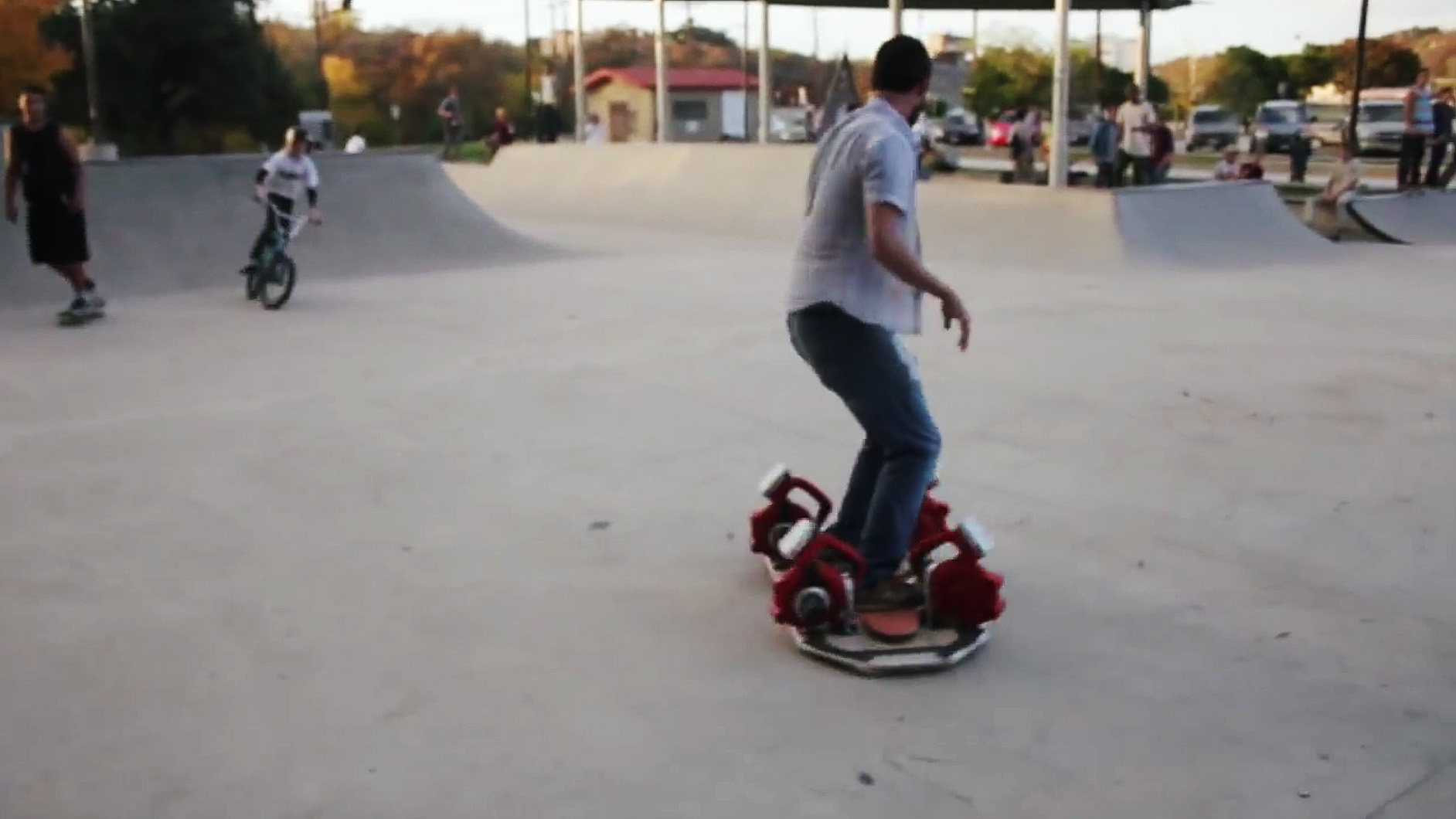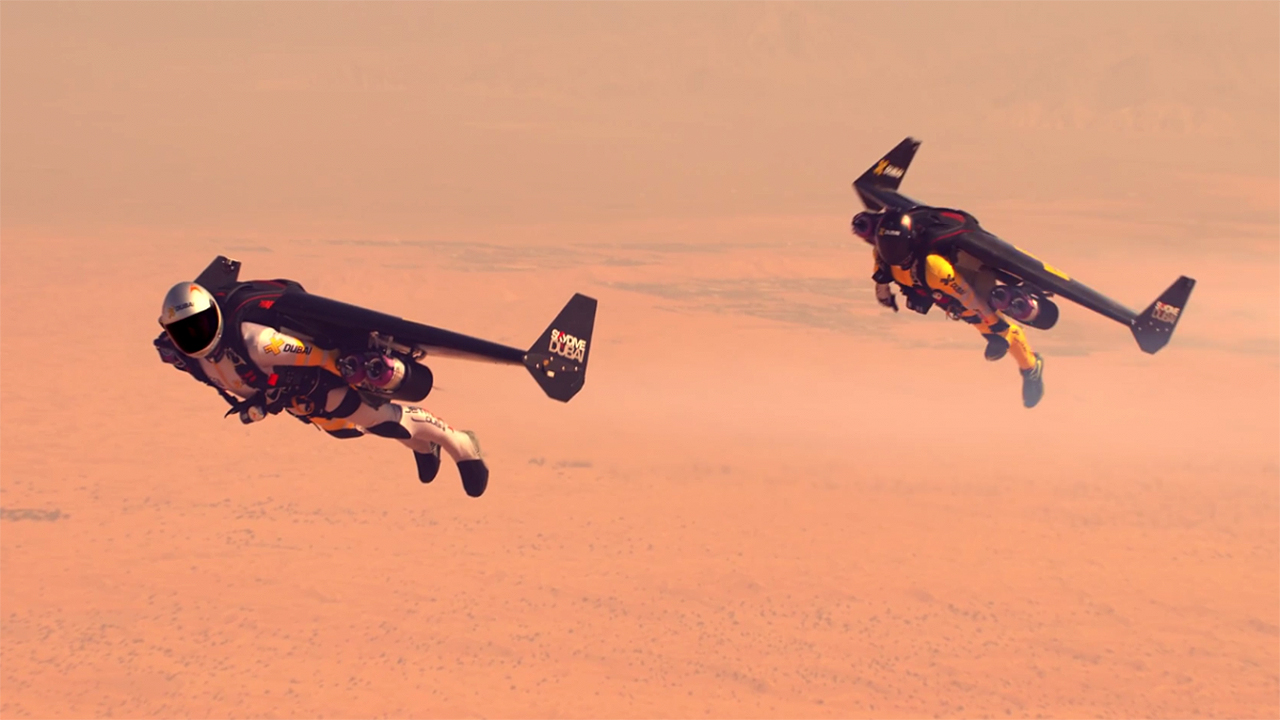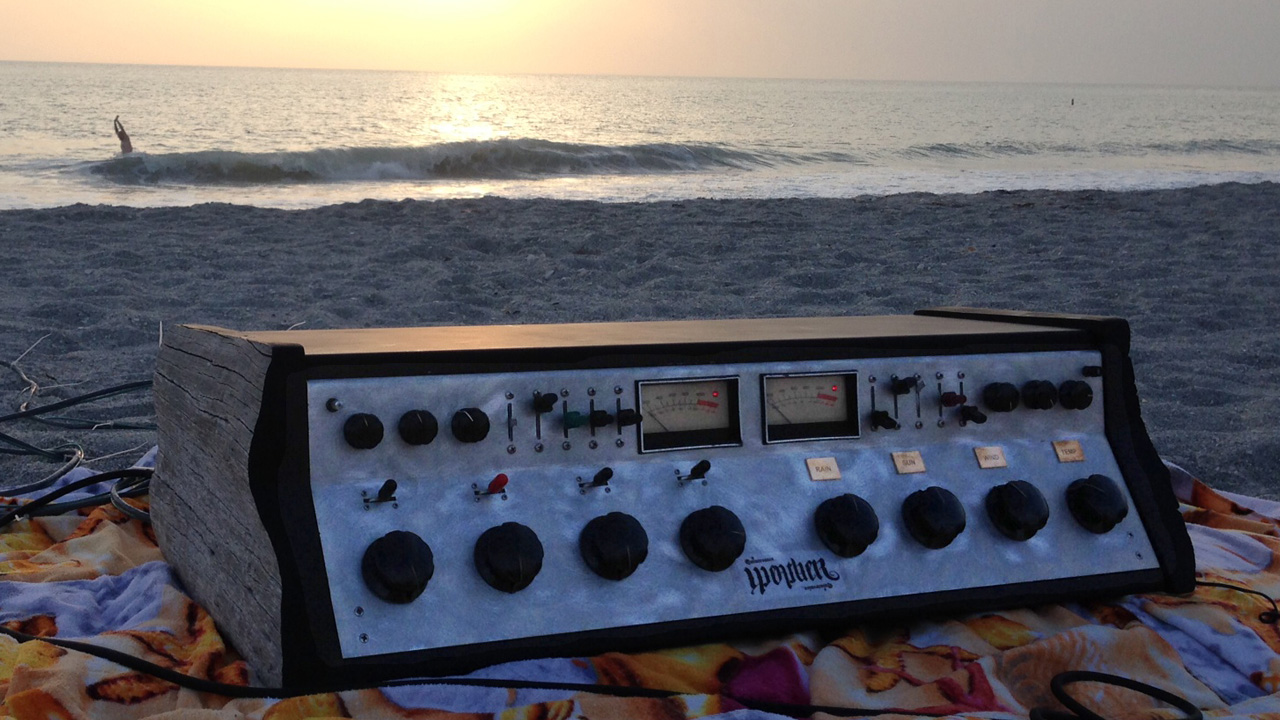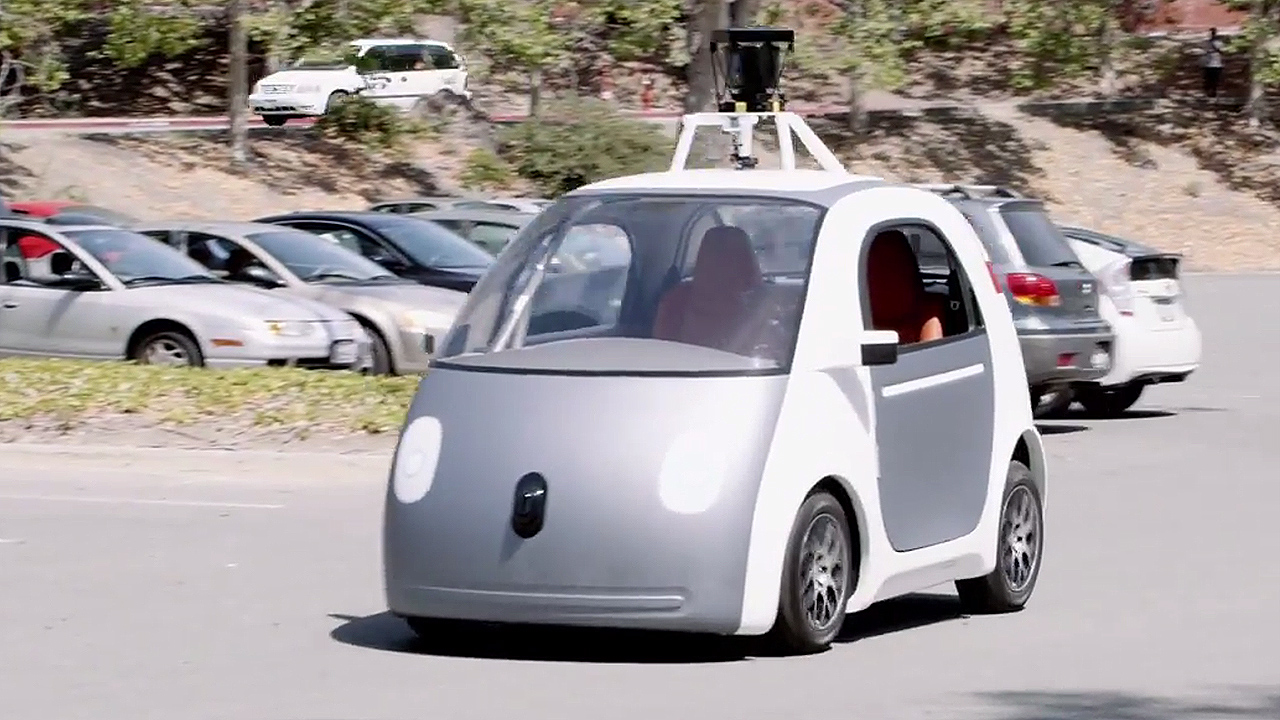I highly doubt I will get the opportunity to see NASA put a man on Mars before I go the way of Ol' Yeller, but when they do eventually get around to it, they better bring this awesome rover concept with them. Just check this thing out. It can drive by itself, initiate some wild drifts, and even shoot hands-free espresso straight into your bloodstream (OK, so I made that last part up). If you want a first look at what everybody will be hooning come Total Recall 20, then check this puppy out.
Technology
While its pretty surprising that nobody thought of this before, a Chilean company has begun developing drones custom-fitted with flotation devices, cameras, and microphones in order to assist lifeguards in their primary duty: Saving lives (and yelling at kids with a bullhorn). These mini rescue-copters are still in the testing phase, but could seriously change the way the surf industry approaches safety, so make sure to stay tuned.
When skier Joss Christensen debuted the Trace tracker technology earlier this winter, we were kinda blown away by it. Now we get a look at what kind of data it collects for surfing.
For surfers it actually calculates the angle of your turns and rotations—quite possibly be the first step to ending the continuing argument on surf airs. Besides that, it also tells you how fast you're going and the distance you traveled on a wave. Check out TraceUp.com to learn more.
The human race has been getting promised flying cars for decades now, and we're closer than we've ever been. But does that mean we're actually going to be in them in the next couple years? Probably not, but AeroMobil is claiming to be close to a final product on the 3.0 version they've been testing in real flight conditions since October 2014. And they're claiming that it'll be on the consumer market come 2017.
Let's dispel a few things first though about the Aeromobil 3.0: you'll need a separate small aircraft license to operate one, it's projected to cost between $250,000 and $300,000, and just as we've seen with drones, FAA regulators is sort of confused on how these fit into our society moving forward.
We're not really quite sure yet about the merits of flying cars, albeit the prospect of having a vehicle that can drive and fly does seem infinitely badass. Whether or not they're going to be ready for a consumer market and have regulations completely laid out by then is a different story though. Only time can tell when we'll be clogging up the skies next.
We're still not sure why BMW wants to take away the fun of drifting from humans, but alas they are aiming to with their self-drifting M235i. So to test the technology out, they coined the "Ultimate Drift Challenge" by pitting the car against Formula Drift champ Dai Yoshihara.
This is merely the teaser for the video, with no details of when the actual video will release. We're guessing (and hoping) Dai tears the machine apart for the sake of the entire drift community.
While I'm not necessarily a fan of Big Bang Theory or major corporations parlaying the "alternative lifestyle" into wider cultural bandwidth and bigger bottom lines, this Jim Parsons-hosted Intel commercial does introduce some pretty useful action sports tech. Beginning with a BMX rider mis-judging the distance between ramps and (hilariously) slamming because of it, this TV spot then introduces Intel's RealSense technology, which among other things, allows you to take a photo and measure the distance between objects within the photo. We really don't know how it all works, but we do know the search for that sweet spot on the landing just got a whole lot easier.
The future is here people, just ask Joss Christensen, who, while competing at Winter X Games last weekend, strapped on one of the coolest new action sports gadgets for a test run. Dubbed Trace, these tiny little beacons mount to your helmet, skis, and snowboards, recording data (speed, distance, air time, vertical) that then sync back to your phone or GoPro for a truly immersive visual experience.
Perhaps the coolest part of Trace, however, is not its advanced GPS abilities—allegedly 10 times more accurate than a free phone app—but its auto-editing feature that integrates all the footage collected from your filming device, before selecting the best rides, cutting out the boring filler, color correcting, and adding your stats via a sexy on-screen display. It all seems complicated, but it's really not. Just check out Joss Christensen's run through the Winter X slopestyle course to get a sense of what the final product will look like (minus the tweaked 540 grabs over 70-foot booters, of course).
Yesterday at Las Vegas's annual Consumer Electronics Show (CES), Mercedes-Benz unveiled what is sure to be most groundbreaking, and controversial, automotive prototype of the year: The self-driving F 015 "Luxury in Motion" Concept. The German automaker has been trending toward automated driving in the past few years, introducing lane guidance technology, emergency breaking systems, and parking assistance features in many of their S-Class vehicles, but the F 015 takes things to the next level, with a totally hands-free driving mode designed to shuttle drivers from point A to point B with virtually no input, outside of making entertainment selections on the interior's array of screens, of course.
Mercedes describes the concept poetically, hoping to make vehicles a "third place" after home and office to unwind and entertain, but as fans of driving–of downshifting in, upshifting out, and throwing it sideways in between–we are more than a little skeptical. The vehicle isn't due until at least 2030 and there's no real reason to believe that, once it does arrive, every automaker and every model will follow suit, but none of that changes the fact that the F 015 poses a serious threat to driving as we know it. Don't believe it? Well, Mercedes even demonstrated the car's ability to communicate with pedestrians via light queues, voice commands, and crosswalk projections. Short of giving the vehicle reason to exist, you don't even need to exist, and if that doesn't make you wary of the coming robot apocalypse then you clearly haven't been watching enough Will Smith movies.
Check out additional photos of the F 015 concept below.
With the onslaught of smart phones, smart cars, smart home thermostats, and smart just about everything else, it's about time a smart snowboard was made. And the guys at Signal Snowboards were just the people to develop it.
In this new episode of Every Third Thursday, Dave Lee and the Signal Snowboards crew team up with Matt Davis from Name The Machine, Samy Kamkar, and Alex Nano to build a snowboard that acts like a video game controller to control the playback of the music. The crew builds sensors into the snowboard and creates custom software to gather data and manipulate the soundtrack based on the boards motions. Signal rider Daniel Brown then gets to test out the smart board at Bear Mountain, creating his own custom park riding soundtrack.
What would you want to program into this open source board? Let us know in the comments below!
Check out the Toyota 4Runner: facebook.com/toyota
When Tony Hawk revealed that his hoverboard was a hoax, he broke our impressionable little hearts. With time and therapy, we began to regain our trust in the universe, and then along came Mr. Hoverboard, an Austin local who makes his own DIY hoverboards out of leaf blowers and some plywood. As hard as we tried not to fall head over heels again, the video below shows that his contraption, though definitely not without its limitations, is at least real. So real in fact, that the amateur inventor has published the complete build instructions online. Before you run off to build your own, however, please remember that a hoverboard is still no excuse for snaking everybody's line at the skatepark (here's looking at you Mr. Hoverboard).
It's a bird, it's a plane...oh, wait, it's actually ex-Swiss fighter pilot, certified madman, and Guinness World Record holder Yves "Jetman" Rossy strapped to a pair of jet-propelled wings thousands of feet above the Dubai desert. If you're afraid of heights, avert your eyes. Everyone else, just watch in awe as Rossy, in partnership with XDubai, zips through an incredible formation flight with Aerobatics Champion Veres Zoltán.
So you've got a bunch of extra cash lying around and you're trying to figure out different ways to burn through it. Let us give you a suggestion: a killer whale submarine.
Hammacher Schlemmer has got you covered with a 17-foot long Orca-looking submarine that can hydroplane at 50mph. It fits two people, has a camera in the dorsal fin that streams right to a screen inside, goes 25mph underwater, and can leap out of the water like an actual whale breaching. It's built to only go to a depth of 5-feet, but we're willing to look past that fact due to its total awesomeness.
Check out some photos and videos of it below.
Let’s be honest, even though they were conceived in the 1920s, the days of phonographs and magnetic tape seem prehistoric to today’s generation of music consumers. It is true, though, that with wearable musical instruments and wireless WiFi receivers to stream our tunes, the music technology industry certainly has come a long way.
2014 saw an influx of groundbreaking inventions in the music world from celebrity-designed gadgets to wildly successful KickStarter projects. To commemorate those who are advancing the music technology timeline, we’ve compiled a list of our favorite music creations that were unveiled this year.
The U.S. Navy recently deployed their first laser cannon, called the LaWS Laser Weapon System, for operational testing on board the USS Ponce (AFSB(I)-15 recently. Sure, they tell us it's their first operational laser cannon, but do we actually believe that? I mean, laser pointers have been around for years and years, and you're telling me that the Navy wasn't already blowing shit up with lasers? Something doesn't add up here, but we'll still watch it blow practice targets (including using drones as skeets) up by what essentially looks like playing a video game.
h/t Jalopnik
Listen, I'm first in line for saying I want hoverboards to be an actual real thing. Marty McFly is a hero that I've aspired to be for most of my life, and how could I be him without a hoverboard? But I'm just really tired of scientists, that dreamcrushing liar Tony Hawk, and fake companies getting my hopes up that a real hoverboard is going to be here anytime soon. I just can't keep taking that let-down—I'm fragile.
Earlier this week though, Hendo Hoverboards launched their Kickstarter campaign for what they're claiming is the first real hoverboard. And yes, we've heard that claim made before—but it's a Kickstarter campaign so it must be amazing! Let's breakdown the initial absurdity though, because remember, we can't be let down again.
First off, they've got a kid helping in the lab. What is this Doogie Howser or something? Second off, they've got a nerd in a lab coat testing it. He doesn't even know how to pump on a transition—just look at that awful style! Third off, they say they're giving the wheel a run for it's money. Haven't they ever heard the phrase, don't try to reinvent the wheel?! Fourth off, the hoverboard only works over a metallic surface—don't they know the streets aren't made of metal?
That's enough of my ranting, but as the New York Times pointed out after testing the Hendo Hoverboard, "It's not exactly Marty McFly's hoverboard. Now it only works on special surfaces, and the battery life is only a few minutes long. And it's tough to ride."
Plus, if you read the NY Times article you'll also find out that Hendo's long-term goal is to create magnetic technologies and new kinds of building foundations. Sure, they want to create specific skateparks you can use these boards at, but this reeks of another publicity stunt to drum up attention for other reasons.
Call me a skeptic, but I don't believe this is quite the hoverboard we've been waiting for yet. But who knows, maybe I'm just so bitter from having my heart broken so many times that I can't recognize the real thing when it actually comes along.
Click here to watch the Most Popular Videos on Network A
It's hard to believe, but Google's secretive self-driving car project might be the future of passenger cars. Olds think it's "cute", moms love it because they can pay more attention to their kids, and blind people can get around easier.
Google finally let regular ol' citizens give their self-driving cars a "test drive" in Mountain View, California and people seemed to genuinely love the car. Yes, this certainly has the potential to improve road safety and help give autonomy back to people who cannot drive. Auto enthusiasts will be less excited. Self-driving vehicles go slower and take away the freedom that is part of the inherent appeal of driving. Human-driven cars aren't going anywhere anytime soon. People who love driving are still going to do it, but it will be really interesting to see how these self-driving cars affect the future of transportation.
Would you want a self-driving Google car? Tell us in the Comments.
Click here to watch the Most Popular Videos on Network A
Another day means another Kickstarter campaign for a new action sports product. Hot on the heels of the super-fun looking Tortuga drifting tricycle, comes the Marbel Electric Skateboard. Claiming to be the world's lightest electric vehicle, the board weighs 9.9 pounds and has a deck made of cabron fiber and Kevlar. The board has a top speed of 20 miles per hour and can travel 10 miles on a single charge. Since 20 mph is pretty damn quick, a mobile app allows you to customized the top speed and acceleration to your preferences. Marbel has already exceeded its $90,000 Kickstarter goal. As of May 29, the company had raised $176,035, so get ready to see some of these electric skateboards zooming around a town near you sometime this fall.
To see more about the Marbel Electric Skateboard, check out their Kickstarter page.
What do you think of this electric skateboard? Tell us in the Comments.
[h/t Mashable]
Do you think this video is Holy? Rank it above
British snowboarder Jamie Barrow likes to go fast. Really fast. And he doesn't even care if he's going downhill. Working with inventors at DreamScience, Barrow was towed on his board by electric jet engines across a frozen lake in St. Moritz, Switzerland. He reached a top speed of 80.63 km/hr (50.1 mph). The concept of being propelled by a jet engine was foreign at first. But after Barrow realized that "you're not going to take and fly somewhere," he was able to harness the power of the engine.
Barrow is no stranger to setting speed records. He set the British speed record in April 2013, going 94.19 miles per hour and broke the world indoor record (43.13 mph) in July. And he thinks as the electric jet engines get refined their applications are limitless. The team at DreamScience, which made the engines, envisions skiers and snowboarders using them to get to the top of mountains and for windsurfers to use them when there's no wind. By that point, you'll probably be able to film the whole thing with your drone that automatically follows you without a pilot.
What do you think of snowboarding with jet engines? Tell us in the Comments.
Connect with Network A to have awesome and amazing delivered right to your inbox.
Lit Motors has a revolutionary idea: a two-wheeled electric vehicle that can never tip over. Part-motorcycle, part-electric car, the C-1 is looking to change the concept of what a vehicle is. Even the investors in the company are unorthodox. Both 11-time surfing champ Kelly Slater and World Industries founder Steve Rocco have put money in Lit Motors.
The C-1 stays upright by using two gyroscopes and even deploys landing gear when it is parked (how awesome is that?). The bike is scheduled for production sometime in 2014, with a base price of $24,000.
What do you think of the C-1? Tell us in the Comments.
[h/t Devour]
Ask anyone who has ever drifted a car why they do it and they will most likely tell you one important reason: fun. Sliding sideways, testing your precision driving skills, pushing the limits of ridiculously powerful cars and your driving skills; these are why people drift cars. Which is why it's so puzzling to see BMW show off its new M235i at the Consumer Electronics Show this week. The new 2-series car can drift itself. The driver just sits there. It might be fun for the car, but we can't see the person behind the wheel getting much excitement out of it. Although we must admit, the idea of a driverless BMW competing in Formula Drift is kind of intriguing.
Image courtesy of BMW
It's time to start getting ready for Battle at the Berrics 7. With the new Nike SB skateboarding app, you can connect with other skaters for a game of S.K.A.T.E. and learn new tricks with tips from Nike's team of pro skaters.
Google Glass is a massive step forward in wearable technology. Sure, it has spawned a category of early adopters known as Glassholes, but even Google is trying to distance itself from those folks. YouTube user JerryRigEverything wanted to find out what it would be like to ride a motorcycle while wearing Google Glass. He discovered that it looked a lot like a video game, except that the consequences of a momentary lapse in attention would be much more dire. "It was rather strange having a lit display right in front of my eyes everywhere I looked," he says. The Glass was particularly distracting when he checked his blind spot and he had difficulty hearing the Google lady who was giving directions. Still it's easy to imagine this technology evolving to a point where it becomes very helpful. Also JerryRigEverything might have the most mellow voice known to man.
What do you think of riding a motorcycle with Google Glass? Tell us in the Comments.
[h/t Business Insider]
The term "artificial wave" just sounds weird. But technology is making man-made waves better and better. The Flowrider standing wave has been around for awhile, and has produced some epic wipeouts. The Wavegarden in Spain has hosted the world's best surfers. The Webber Wave Pool could be the next step in artificially-created waves. The wave is basically an oval track like the ones sprinters compete on, except this one is all water. An operator would be able to change the wave height, speed, and shape at the push of a button. Surfers would be able to get consistent and predictable conditions to practice in.
There's no word on how far away this project is from becoming reality, but it is certainly an intriguing glimpse into the next evolution of surfing.
Connect with Network A and have awesome and amazing delivered right to your inbox
Our smartphones are about to be used for a lot more than sexting and playing Candy Crush. At the 2014 Milan Design Week, Samsung unveiled a Smart Bike concept. The purpose of the bike is to maximize rider safety by utilizing technology that is built into the bike and by allowing it to sync with a smartphone's capabilities. For example, the Smart Bike would be able to create bike lanes by projecting lasers onto the road. A back-up camera built into the rear of the frame would be viewable on the screen of a smartphone mounted to the handlebars. In addition to these technological features, the frame, which was designed by world-renowned bike builder Giovanni Pelizzoli, has a curved top tube which minimizes the most dangerous vibrations.
The bike is just a concept right now, so there is no guarantee that it will ever actually become a reality, but it's an interesting look at the future of bike design.







